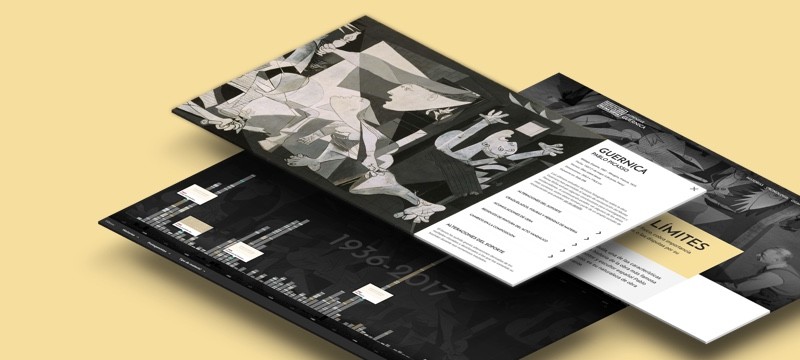Copious film and photographic materials exist on the relentless bombings that brought Spain to its knees. From its first public showing, and iconic status, Picasso’s painting has been understood as a response to the bombing of the Basque town and as a lament against fascist violence, and was subsequently referred to, and still is, in conflicts and settings of cruelty towards civilians.
The bombing of Gernika is largely remembered because it signalled the start of the systematic attack on civilians as a strategy of war, a kind of rehearsal of the so-called ‘total war’ against the population. Added to this was the fact that the Spanish Civil War was the first media-covered war, where images took part in the conflict.
Guernica became an allegory of that fateful bombing of which very few images exist.

Other bombings
The bombing of Gernika is largely remembered because it signalled the start of the systematic attack on civilians as a strategy of war, a kind of rehearsal of the so-called ‘total war’ against the population. Added
But many other bombings hit Spanish territory during the war — the bombings of Maestrat, Benassal and other towns in Castellón, in February 1938, were, despite being distanced from the first line of fire, the subject of so many armed and strategic experiments by the German army. Not to mention the systematic onslaught on Madrid and Barcelona, or the bombings of Durango, Santander and Alcañiz, to name but a few, remembered for their extreme cruelty towards civilians.
War in real time
Since then, the twentieth and twenty-first centuries have been the most violent in recorded history, seared by national and international conflicts. The strategies and struggles of geopolitical and economic hegemonies, imperialist and neo-colonial conflicts, political struggles and international repression, have used the population, fear and media sway as their main weapons. These wars have been widely recorded and photographed and practically broadcast live with the arrival of television, before boundlessly soaring in impact and dissemination in the digital age. Inside a context of relentless belligerence, Guernica constantly appears, in spontaneous consensus, as an icon and image which, constructed in the art world, syntheses and validates the notion of war and modern warfare, be it in Vietnam, Nicaragua, Fallujah, Iraq or Syria.





![Demonstration against the Iraq War [Manifestación contra la guerra de Iraq] Demonstration against the Iraq War [Manifestación contra la guerra de Iraq]](/sites/default/files/styles/medium/public/documento/GUE-1656.jpg?itok=g3pTjWrU)





